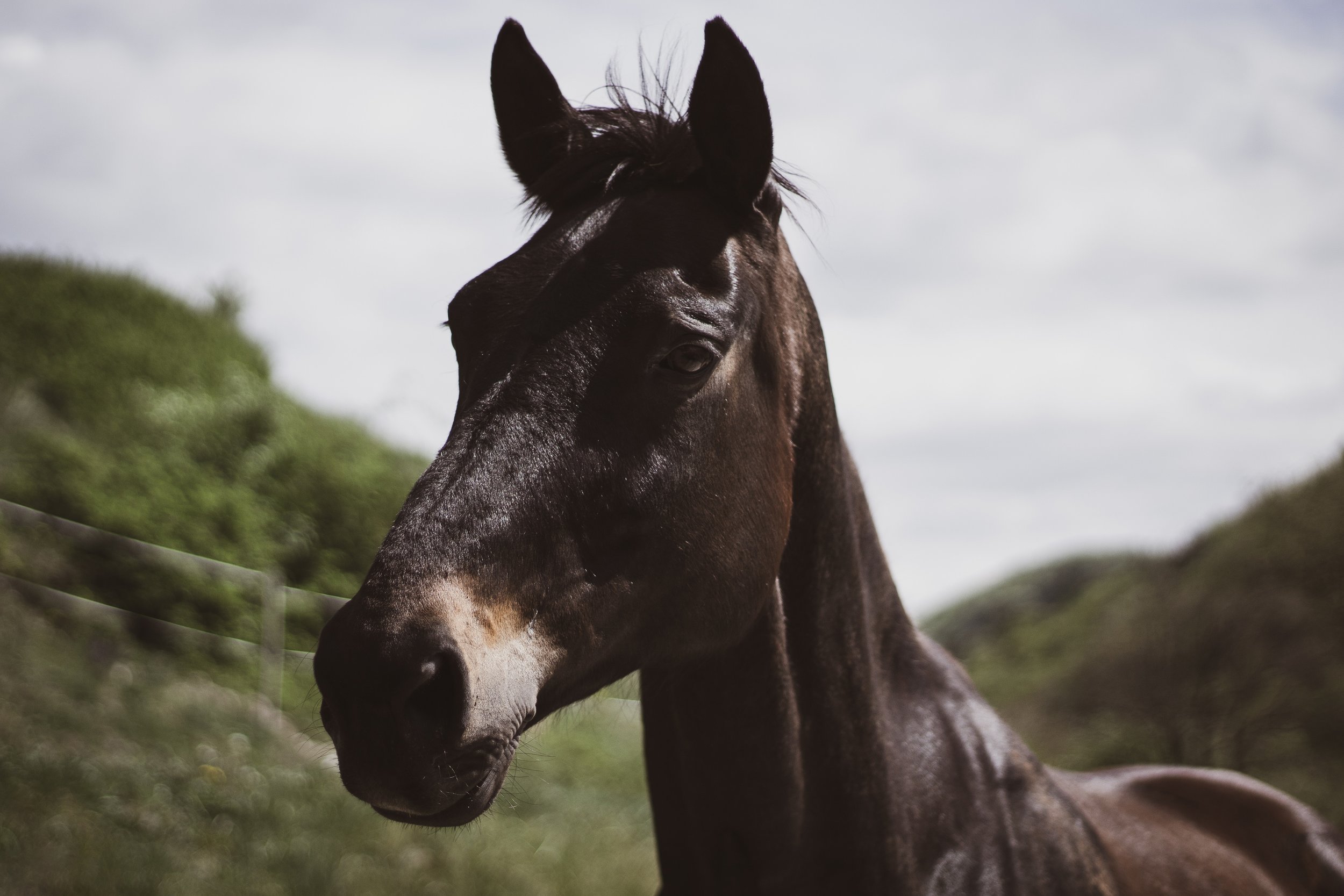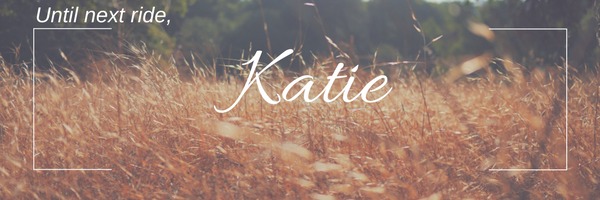Who Wouldn't Want To Train A "Bomb Proof" Horse?
What is the bomb proof horse, and what SHOULD they be?
Ok - so first let me preface this with:
we don’t like the terminology “bomb proof”.
Often when I see horses described as bomb proof, they are malnourished or shut down.
Even when we are working with the truly quiet horses, I believe the term bomb proof puts us in a false sense of security that increases risk of accidents happening.
My experience has been active in training horses to be beginner riding school horses, so we need to get them as quiet as we can. For me it is important to have our horses in peak mental, emotional and physical health as well as a clear understanding of what is expected of them and their cues to be considered “quiet”.
School horses are truly special horses as they need to look after riders that are unbalanced and can unintentionally hurt them when they lose their balance, don’t understand complex aids (the horse knows they can get out of work at any stage) and aren’t strong enough to “bully” them into submission.
In my experience, the quiet “bomb proof” horse isn’t created by sacking them out and desensitising them.
They are created by proving ourselves as competent and trust worthy leaders, building our horses confidence and their understanding. This can make any breed and any temperament of horse “bomb proof” - as long as we rule out other considerations such as pain, medical conditions, ill fitting gear and the like.
Outside of pain or discomfort, the reason a horse might NOT be classified as “bomb proof” include:
The horse not understanding what is needed of them
The horse can’t do what we are asking of them
The horse does not have the confidence in themselves (or their rider) that they are safe/will be kept safe, and this can include any past traumatic experiences.
The horse does not understand how pressure is being used as a tool of communication. (This often starts with the rider/trainer not understanding the timing of pressure/release for the horse to understand it)
The horse doesn’t feel understood. (This is the most common issue I see. Our horses try to communicate with us what they need and we often miss the subtle cues and the horse ends up overreacting and being considered dangerous)
The rider/trainer not knowing when to back off and when to push for more, or expecting too much of the horse
These principles are our guiding factors in establishing the training that Equestrian Movement offers in our online courses:
First do no harm. Ensure that any of the training you are doing moving forward is of no detriment to the horse.
Create a safe and stable learning and living environment.
Create a relationship with our horse where they trust us that not only will we not hurt them but we also won’t put them in a situation where they could be hurt.
Teach them how to learn and understand what we want.
Teach them how to process their emotions and think rather than react.
Teach them confidence
Make learning fun
Make moving fun
Make being ridden fun
Curious to know how we do this? We cover all these in our course Training Trainability.
How To Stop Your Horse Spooking
When our horses are naturally inclined to flee rather than fight, how can we stop the spooking?
Our horses mostly are prey animals, creatures of flight. Their instinct is to run first think later. To understand how the different breeds react to scary stimuli read our article … This is a survival mechanism bred into them over years of evolution and now we are trying to redirect that behaviour to make them safe for mounts for anyone to ride.
The old school method and train of thought is to shut them down, something akin to learned helplessness. Essentially we try to be bigger and scarier than anything else so they are more scared to react to their environment than they are of the scary thing in their environment. This can work for the more experienced riders but not for less experienced riders.
Just hold on and clock up the ks. Another way to desensitise and settle a spooky horse is to just expose them to a bunch of different environments and stimuli until the stop being scared. Again this requires an experienced professional rider. Done by a novice the horse can end up more scared because the rider is scared and so now it thinks it has a legitimate reason to be scared!!
What we teach at equestrian movement is getting the horse to be curious about what its scared of. This is helpful for a few different reasons.
We can’t desensitise a horse to everything. This means that each time our horse encounters something new we have to go through the whole desensitisation process with that object. However, if we teach them to be curious about things they are scared of, so that it doesn’t matter what they are scared of -they know how to approach it and deal with it.
Even the most beginner riders can work on teaching curiosity and create a calm, relaxed horse.
It creates a good relationship with the rider and establishes trust and confidence in their rider over the long term.
It can be a fun exercise to break up their training regime to keep them going sour on their work
Your horse becomes safe for trails and if you are unsure you know what to do to best handle your horse when it becomes nervy and spooky.
Would you like to learn how to make your horse curious? We have an excellent mini-course dedicated to just that - click here to learn more!
Are You Causing Your Horse To Shut Down?
When is it desensitizing and when is it shutting down?
Horses are natural flight animals - their first instinct is to run first, think later.
The old school mentality of breaking a horse is to break the horses spirit, so that it forfeits its’ life to you. Your horse is then more scared of you than anything else and so chooses to figure out what you want from it rather than run away.
A lot of breakers will say that your horse isn’t safe until you sack them out.
What they are talking about is desensitising. I have done desensitising and sacking out with plenty of horses and here is my problem. You are giving them no other option but to let you do scary things to them and in the process WE ARE GIVING THEM NO TOOLS TO DEAL WITH THEIR FEARS AND EMOTIONS. The ones that don’t thrive with this style of training are deemed mentally unsound and untrainable.
In this environment it is very easy to shut down your horse -especially if you are also using forceful techniques as well.
When a horse shuts down it stops reacting to stimuli all together. This doesn’t mean that your horse is calm and relaxed, understands what to do and isn’t scared. It doesn’t mean that your horse is brave and confident and trying to look after you. It DOES mean your horse has learnt that if it doesn’t move when the scary thing is there, the scary thing goes away.
The second problem with this is that you have to reteach it for EVERY SCARY OBJECT.
Just because you have taught your horse to stand still to drape the tarp over it, doesn’t mean that it knows to then stand still for the flappy bag or the umbrella or the pram and then all the new things it will experience when you take it out. You have to reteach it for every scary object that it reacts to, to stand still while you move it over there body.
For some horses, once you have touched them with the object that they are scared of this process works - they are no longer scared.
But a horse that has shut down has dissociated from the experience. It is overwhelmed by fear and knows to just stand still. So it stands tense and rigid. There is only so much this horse can cope with before it hits its breaking point and loses it, leaving the handler wondering “where the hell did that come from?”. This horse hasn’t learnt not to be scared - it has just learnt not to react.
In either case, both of these horses previously mentioned horses have not been taught how to process fear and emotion. Both of these horses haven’t learnt not to react to scary things. Both of these horses haven’t developed confidence and trust.
That is why at Equestrian Movement we teach CURIOSITY instead.
Teaching curiosity works for even the most timid and sensitive horses.
It teaches them to trust us.
It teaches them how to be brave and confident.
It teaches them how to handle objects and situations that they are scared of without just trying to run away.
It teaches them how to investigate things that are scary.
Most importantly, eventually they learn how to look after their human.
Would you like to teach your horse to be curious? You can find this and so much more (including communication and leadership, critical to the building of trust in your horse) in our Holistic Horse Handling Program.
Click here for more information about the Program
Looking for more specific content?
Have a question you are seeking answers to? Send us a message and we will create a blog!





The simple, step-by-step proven process that builds confidence, faith and trust with your horse and creates willing horses that want to look after you